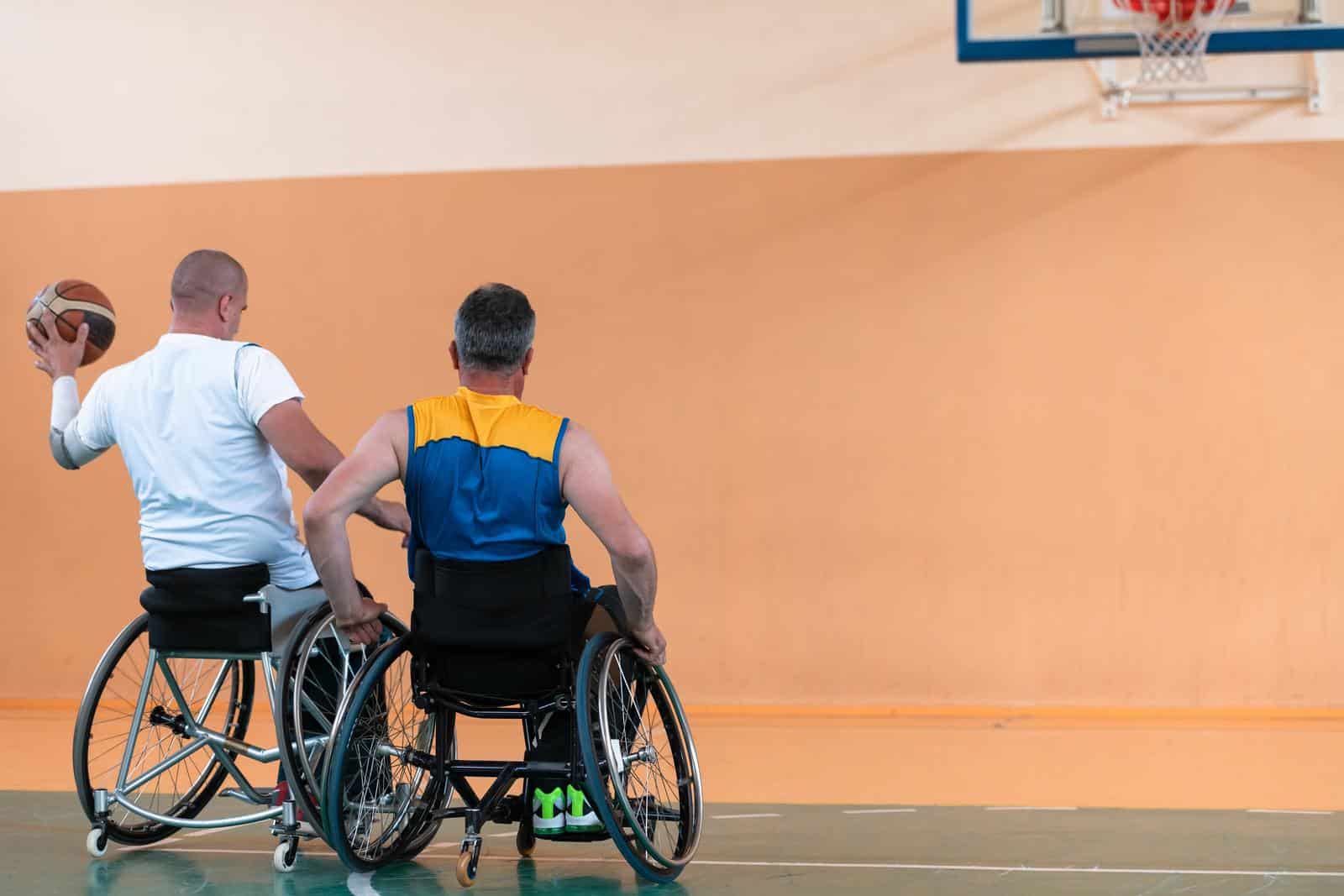AFFF Guide For Veterans: An Attorney’s Perspective Fighting For Veterans Rights
Veterans exposed to toxic foam while serving in the military as firemen or related occupations may be entitled to recover against manufacturers of the material.
Why this matters?
If you or a loved one was exposed while in the military or as a contractor and now suffering from cancer, it could be that the cancer is linked to the exposure.
There is an ongoing and evolving law suit you may be eligible to join if you presently have cancer or suffered through cancer treatment.
There are two takeaways.
First, veterans who developed cancer linked to their exposure to AFFF while in-service may be eligible for disability compensation benefits. Those benefits can be up to 100 percent depending on the nature of the disability.
Second, veterans who developed cancer linked to their exposure to AFFF may be eligible for inclusion in a mass tort to recover against manufacturers of AFFF. Recovery from a tort can provide compensation far beyond what a person receives from VA Compensation.
For Benjamin Krause, veterans rights attorney and founder of Krause Law, problems like this matter.
The United States has a commitment to make sure those companies who injured our soldiers are held responsible. Whether it is through the VA Compensation process or court proceeding, our law firm fights for the rights of veterans in all contexts.
As a service-disabled veteran owned law practice, Krause Law stands up for veterans injured or ill from their military service.
The firm wrote this short online guide to help inform more veterans and others about the ills of the toxin called aqueous film-forming foam (AFFF) that was commonly used to fight fires in the US military.
Here is what you need to know to get started.
Introduction: Understanding AFFF
Aqueous film-forming foam (AFFF), commonly referred to as firefighting foam, is a Class B firefighting foam used to extinguish fuel, oil, gas and petroleum-based fires. The foam mixes with water to form an aqueous film that restricts oxygen, thereby extinguishing the fire and preventing it from reigniting. AFFF has been a critical tool for military firefighters, providing effective fire suppression capabilities. The toxic foam was made using perfluoroalkyl and polyfluoroalkyl substances, commonly referred to as PFAS. There are a number of lawsuits involving PFAS around the country against manufacturers such as 3M of Minnesota.
Poly-fluoroalkyl chemicals (PFAS) are known as “forever chemicals.”
Why are they forever chemicals?
This nickname is due to their durable molecular bonds which prevent natural decomposition in the environment or within the body.
That is right. These chemicals do not break down through normal processes.
The result is that PFAS can accumulate in the body and remain in a person’s system for many years beyond original contact. The accumulation of the toxic chemicals causes significant health problems including cancer. The presence of PFAS has raised significant health concerns, particularly among veterans, leading to the forming mass tort.
Background: The History of AFFF in Military Use
AFFF was invented in the 1960s, primarily for extinguishing fuel fires, by the US Navy Research Laboratory. The Navy apparently developed the foam with its research partner Minnesota Mining and Manufacturing Company, now known as 3M.
The invention showed the synthetic chemicals Perfluorooctanoic acid (PFOA) and Perfluorooctanesulfonic acid (PFOS) were better at suppressing liquid fuel fires than existing resources. In foam form, the substance forms a barrier on the surface of petroleum-based liquids to cut off oxygen supply resulting in rapid extinguishment and prevention of re-ignition.
By the late 1960’s, AFFF was used in all Navy vessels. By the 1970’s, AFFF firefighting foam was extensively used across the US military in settings during training exercises, on flight-decks, at military airports, and in other applications to extinguish fires. Its effectiveness made it a staple in military firefighting, but over time, significant concerns about its health impacts have surfaced.
Department of Defense’s Responsibility: DoD’s Role in AFFF Usage and Safety
The Department of Defense (DoD) has played a significant role in the adoption and regulation of AFFF.
Since the 1960’s, the DoD required the use of a firefighting foam made with PFAS and PFOS. In January 2023, the DoD released new requirements for the firefighting foam it uses to put out jet fuel fires. That same law required the DoD to cease purchasing PFAS-based foams beginning October 1, 2023, and stop using them entirely by October 1, 2024.
Firefighting foam suppliers will be required to certify that there are no intentionally added PFAS in their products and requires foam testing to ensure no PFAS are detected.
The DoD began implementing PFAS blood testing for DoD firefighters in 2021. Understanding the history of AFFF is crucial in comprehending the current legal landscape and the challenges faced by veterans.
Health Concerns: Identifying Health Risks Associated with AFFF
Recent studies have linked AFFF exposure to various health issues, including cancer.
Veterans who have been in contact with AFFF might face a higher risk of developing certain health conditions. Scientific research shows that PFAS are extremely toxic to humans, and that ongoing exposure to the PFAS in firefighting foam can be directly linked to various cancers and other adverse health outcomes including:
- Kidney cancer
- Testicular cancer
- Thyroid cancer and disease
- Bladder cancer
- Prostate cancer
- Liver cancer
- Pancreatic cancer
- Hypothyroidism
- Hyperthyroidism
- Graves Disease
- Hashimotos Disease
Military Application: AFFF Use in Military Firefighting
AFFF’s role in military operations has been significant, particularly in emergency response and firefighting. These roles involve working in environments where AFFF would have been used including where firefighting training or actual fire emergencies occurred. Identifying veterans potentially impacted by Aqueous Film-Forming Foam (AFFF) involves understanding the specific roles and environments in which military personnel were likely exposed to AFFF.
It’s important to recognize that the potential for AFFF exposure extends beyond the most obvious groups like firefighters, due to the widespread use of this foam in various military contexts.
- Military Firefighters: This group is at the forefront of those potentially impacted by AFFF. Military firefighters, in all branches of the service, used AFFF extensively in training exercises and in responding to fire emergencies, especially those involving aircraft, vehicles, and fuel storage areas.
- Veterans Stationed at Airfields and Naval Bases: Personnel stationed at airfields and naval bases where AFFF was routinely used in firefighting drills and emergencies are also at risk. This includes military staff who worked in close proximity to areas where AFFF was used.
- Veterans Involved in Crash Rescue Operations: Those part of crash rescue operations, particularly in the Air Force and Navy, may have been exposed to AFFF during their service. This includes personnel involved in emergency responses to aircraft crashes where AFFF was deployed to extinguish fires.
- Personnel Involved in Training Exercises Involving Firefighting: Military training exercises that included firefighting drills using AFFF could have exposed a wide range of service members. This exposure could have occurred in all branches of the military during routine training to prepare for emergency situations.
- Maintenance and Cleanup Crews: Veterans who were involved in the maintenance and cleanup of areas where AFFF was used may have been exposed to residue of the foam. This includes personnel responsible for the upkeep of firefighting equipment and the cleaning of training or accident sites.
- Veterans Stationed at Overseas Bases: Military bases outside the United States, where environmental and safety regulations might have been different, could also have seen extensive use of AFFF.
- National Guard and Reserve Members: Members of the National Guard and Reserves who participated in training exercises or were activated for emergency response duties involving the use of AFFF are also potentially impacted.
- Emergency Response Teams: Beyond dedicated firefighting units, emergency response teams in the military, which may include medical personnel, security forces, and other support staff, could have been exposed to AFFF during emergency situations where the foam was deployed.
- Engineering and Construction Personnel: Veterans who were involved in engineering and construction roles, particularly those working on infrastructure projects at military bases where AFFF was used may have been exposed.
- Environmental Health and Safety Personnel: Those who were responsible for environmental health and safety oversight in the military might have been exposed to AFFF during inspections, investigations, or in the course of developing safety protocols involving the foam.
- Logistics and Supply Personnel: Veterans who managed or worked in logistics and supply roles, especially those dealing with the procurement, storage, and disposal of firefighting equipment and substances, including AFFF, could have been exposed.
- Veterans Involved in Joint Training Exercises: Personnel who participated in joint training exercises with other military branches or allied forces that used AFFF could also be at risk, as these exercises often involve combined emergency response drills.
- Shipyard and Dock Workers: Navy veterans who worked in shipyards and docks where AFFF was used for firefighting purposes, either in routine drills or actual fire emergencies, may have been exposed to the foam.
- Veterans Involved in Research and Testing of Firefighting Equipment: Those who were part of research and development teams testing firefighting equipment and substances, including AFFF, could have been exposed during the course of their duties.
It’s important to note that the health risks associated with AFFF exposure, particularly concerning PFAS chemicals, may not become apparent until years after the exposure. Therefore, veterans who served in roles or environments where AFFF was used should be aware of the potential health risks and legal implications, regardless of when their service occurred.
Any veteran who suspects they may have been exposed to AFFF should be aware of the potential health risks and legal implications associated with this exposure.
Manufacturer Accountability: Examining the Manufacturers Involved in AFFF Production
As previously noted, in the 1960’s the U.S. Navy worked with 3M, the chemical company, to develop a firefighting foam that could extinguish fuel fires aboard its ships. The AFFF was patented in 1966.
3M, as a major manufacturer of AFFF, has faced scrutiny over its role in producing and distributing the foam. They, along with other manufacturers of AFFF, such as Tyco Fire Products, DuPont, Chemguard, National Foam and Buckeye Fire Equipment are alleged to have continued to manufacturer the AFFF after discovering the health risks that could be caused from exposure.
AFFF Litigation
Filing a legal claim related to AFFF exposure can be a complex process. The Multi-District Litigation (MDL) for AFFF consists of individual lawsuits related to injuries resulting from AFFF exposure. The litigation is venued in the United States District Court for the District of South Carolina.
AFFF and VA Disability Compensation
Currently, the VA does not recognize illness from exposure to PFAS through AFFF as a presumptive condition. Based upon the foregoing, a potential disability claim will require additional effort to establish that a veteran’s illness is a service-connected disability.
Presently, additional effort from a veteran to gain service-connection may include using a medical expert to evaluate whether your present disability was caused by or linked to the exposure to AFFF. Unlike typical tort claims for negligence, a VA disability claim can be granted it the expert finds the exposure is at least as likely as not the cause of the present disability or disease.
Fortunately, there are efforts underway for legislation to help veterans exposed using the agency’s presumptive disability mechanism.
Initially introduced in 2018, the bill known as the Veterans Exposed to Toxic PFAS Act (VET PFAS Act) was again proposed on July 17, 2023 by Senators Debbie Stabenow, Gary Peters, Bob Casey and John Fetterman. The goal of the VET PFAS Act is to provide for a service-connection presumption for certain veterans stationed at military bases at which they were exposed to PFAS.
Under a presumption of service-connection, specific conditions diagnosed in certain veterans are presumed to have been caused by the circumstances of their military service. If signed into law, this would simply the process to allow veterans to obtain the VA benefits to which they are entitled, such as healthcare benefits and disability compensation. The bill defines a veteran exposed to PFAS as one who, during active military service, was stationed at a military facility at which individuals were exposed to these chemicals including exposure through a drinking well used to provide water for human consumption contaminated with “forever chemicals.”
Fortunately, veterans affected by AFFF may also be entitled to compensation directly from the manufacturers.
Krause Law can assist veterans understand your legal options that will allow you to secure compensation for your medical treatment as well as pain suffering.
Call to Action: Take the First Step with Krause Law
Choosing the right legal representation is crucial. Krause Law has been at the forefront of advocating for veterans for more than a decade.
Benjamin Krause, as a disabled veteran, has dedicated his legal practice to assisting veterans. He understands the depth of your sacrifices. Veterans who have suffered health issues due to AFFF exposure may have legal recourse. Allow our office to advocate on your behalf.
Krause can help you with a claim at the Department of Veterans Affairs for Compensation benefits or in representation through the MDL.
Please contact Krause Law, PLLC for a free initial case evaluation.




 Call Us Now
Call Us Now Email Us Now
Email Us Now


